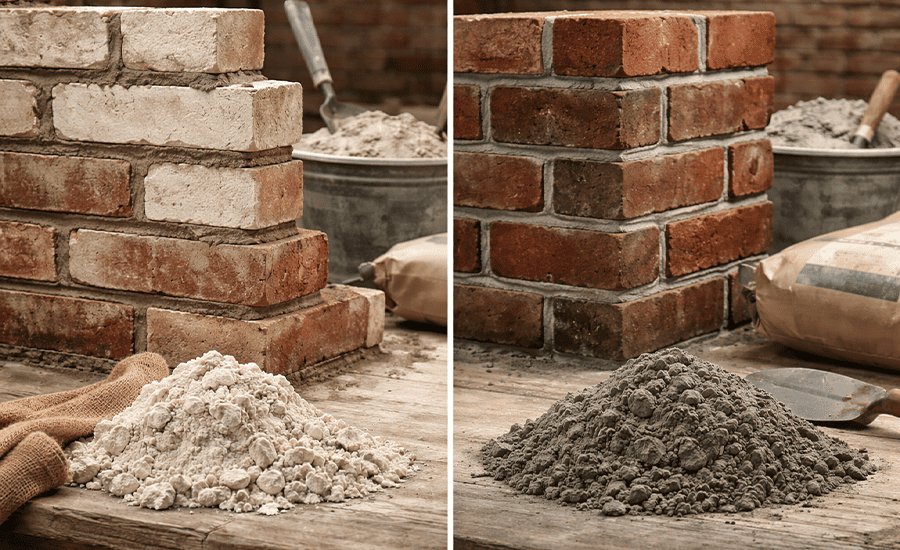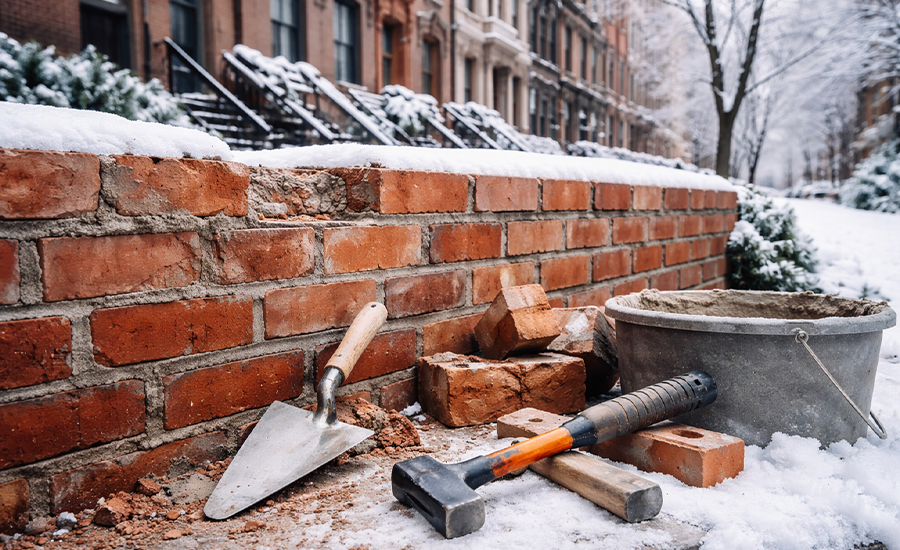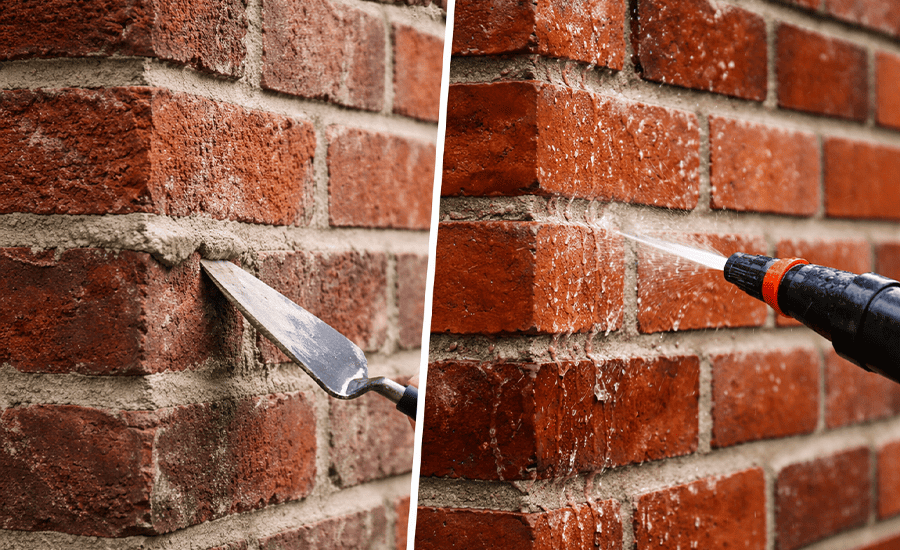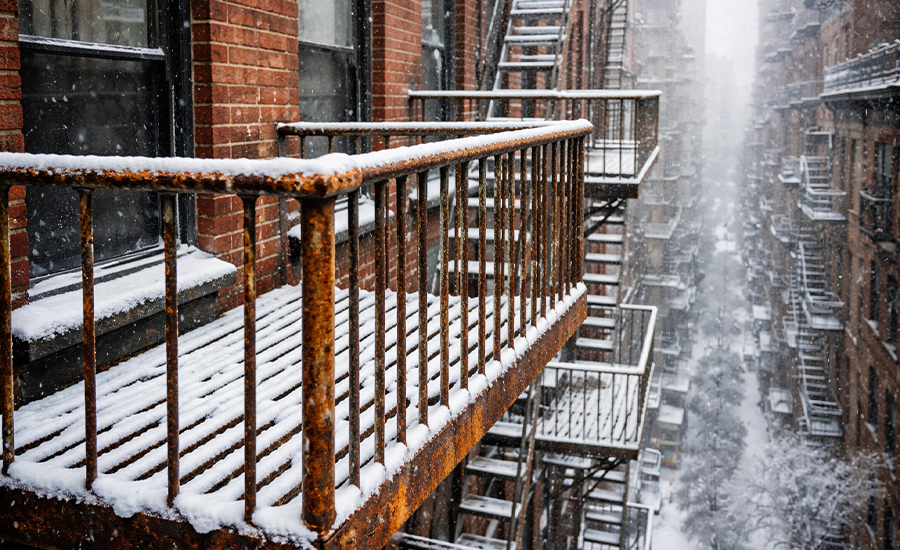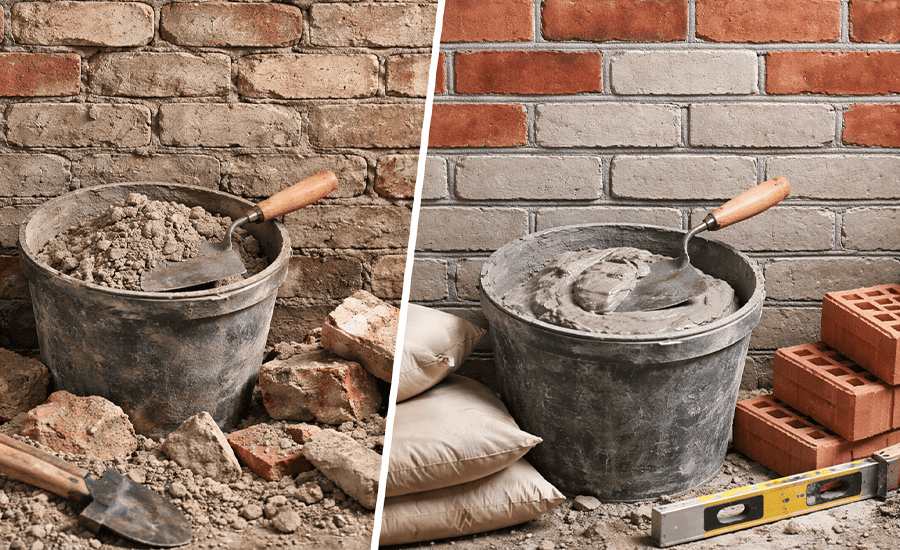NYC properties are symbolized for their contemporary and historical significance. Every building in NYC has fire escapes as it is required by the safety standards. But keeping the fire escape protected, operational, and maintained is most important because different weather conditions have other impacts, such as winter. Winters in NYC can cause damage and degradation to your fire escape if it is not maintained properly because, due to temperature fluctuations, expansion and contraction occur, which accumulate moisture and cause corrosion & rust. Winters can not only risk fire escape safety but also its structural strength. Make sure to address the damages immediately, clean the pathways to make it 24/7 functional without any obstruction. Conducts yearly or quarterly inspections to detect the early signs of damage and prevent hefty amounts of repairs.
In this blog, we’ll break down the pitfalls of fire escape in cold weather, its red flags, smart practices for tenants to apply, and maintenance guidelines.
The Impact of Cold Weather on Fire Escapes
Here is the list of cold-weather elements that can cause fire escapes to be damaged easily over time. Here’s how:
| Cold Weather Challenges | Impact on Fire Escape |
|---|---|
| Metal retraction | Puts strain on the metal weld points. |
| Repeated freezing & thawing | Causes structural degradation. |
| Frozen surface layers | Leads to slippery steps & sagging platforms. |
| Salt-induced corrosion | Results in metal decay under salt exposure. |
| Seized components | Leads to stiffness in moving the joints or ladders. |
| Restricted egress | Snow in the pathways may cause hindrances in evacuation in an emergency. |
How NYC Fire Escapes Fail During Cold Weather
Cold weather can silently weaken your fire escape if it’s not maintained properly. Here are some of the most common failures that occur during freezing months:
- Rusted treads, railings, or stringers that can collapse under weight.
- Frozen or jammed drop ladders and hinges.
- Loose or missing bolts due to contraction and corrosion.
- Flaking paint exposing bare steel.
- Cracked masonry where the fire escape anchors into the wall.
- Accumulated snow creates slippery surfaces and adds load.
- Trapped water in joints that freezes and expands, worsening damage.
Curious how NYC buildings use modern systems to avoid these issues? Read can you replace an old fire escape with a modern design?
Seasonal Maintenance Guide For Fire Escape
The following are the guidelines to detect the red flags in your fire escape:
| Key Inspection Area | Red Flags to Notice | Immediate Response |
|---|---|---|
| Iron framework | Corrosion & surface perforation | Apply protective coatings asap |
| Anchoring components | Damaged and loose bolts & joints | Reinforced weakened parts |
| Stair assemblies | Structural distortion | Call the technician for rapid restoration |
| Moving joints & ladders | Immobilized moving part | Oil the hinges for smooth operations |
| Wall fastenings | Structural gaps in anchorage | Secure joints tightly to prevent moisture intrusion |
| Anti-rust coating | Blistered paint | Apply weatherproof coatings |
| Surface obstruction | Debris accumulation | Clean the pathways for emergency use |
Smart Fire Escape Practices For Tenants
Make sure to follow the guidelines given below:
Safe Practices:
- Report wobbling railings, frozen ladders, or rusted parts to management.
- Keep fire escape landings clear of snow, trash, and plants.
- Use only approved, low-corrosion deicers if necessary.
Avoidable Errors:
- Store bicycles, chairs, or boxes on the fire escape.
- Try to force frozen mechanisms; it can cause breakage.
- Pour boiling water on frozen parts.
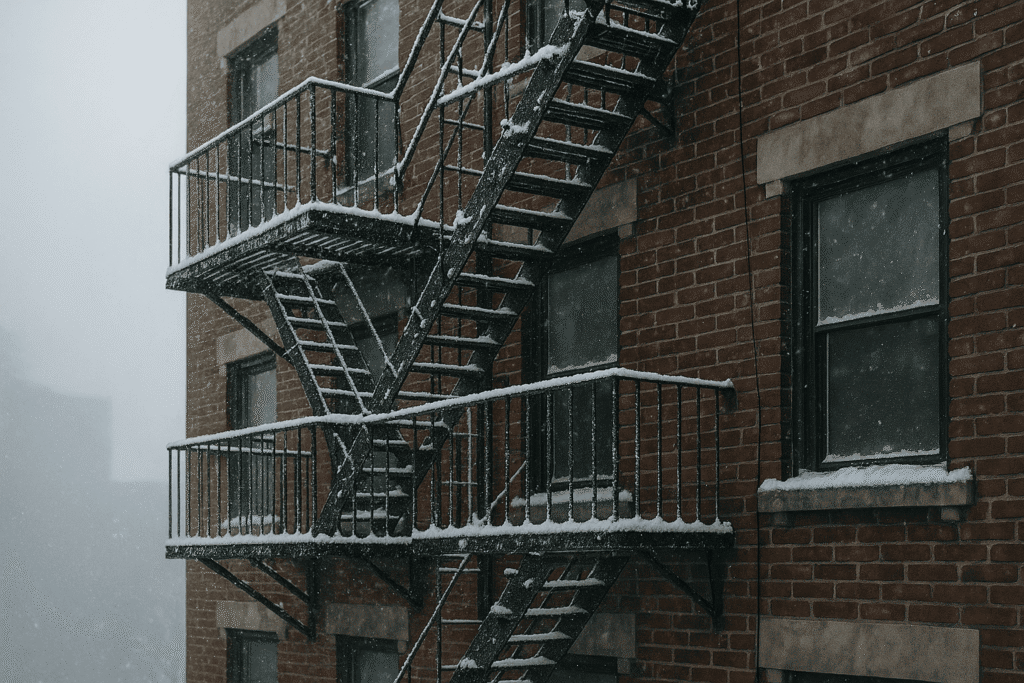
If you’re wondering which design ensures safety and easy maintenance, check which fire escape type is best for NYC apartments?
How To Keep Your Fire Escape Safe Year After Year
It’s important and a responsibility of homeowners to keep their fire escape maintained and ready to combat winter, which comes with fluctuating weather, snow accumulations, and moisture penetration. Here is the list of factors you need to opt for:
- Annual maintenance contract with a certified contractor.
- Keep records of inspections, repairs, and materials used.
- Repaint or recoat every 3–5 years with anti-corrosion paint.
- Consider galvanization or powder coating for extra weather resistance.
- Replace severely rusted parts rather than patching over them.
You can also read about are aluminum fire escapes better than steel? to find which option offers the best durability in winter.
Final Note
In the final note, cold weather has a devastating effect on the metal fire escapes if it is not maintained correctly. Assessment before winter, regular upkeep, and prompt repairs can help your fire escape stand sturdy for a long time, even in winter. Make sure to keep your fire escapes clean, debris-free, and unobstructed, and if an issue arises beyond your control, contact Sardar Restoration Corp. for a professional fire escape repair contractor in NYC.
Sardar Restoration Corp proudly serves every corner of NYC, including the Bronx, Manhattan, Brooklyn, Westchester, and Queens. Our services are designed to meet your specific needs, providing top-quality solutions wherever you are. Check our service areas to see how we can assist you in your location.
Contact us today at (+1) 917-355-8556 or sardarrestoration@gmail.com, or visit us at 2770 Fish Ave, Bronx, NY 10469, United States.
FAQs
Do you inspect fire escapes during winter?
Yes! Sardar Restoration Corp. offers monthly, quarterly, and yearly inspections in NYC during winter, ensuring random checks for rust, corrosion, ice buildup, and mechanical issues.
Do you repair rusted or damaged fire escapes in freezing temperatures?
Yes! Sardar Restoration Corp. offers repairs and replacements of rusted and damaged fire escapes while replacing bolts, welding minor damage, and stabilizing unsafe structures until full repairs can be completed.
How often should I check my fire escape during the winter season?
It’s best to inspect your fire escape at least once a month during winter. Cold weather, ice, and salt can quickly cause rust and stiffness, so frequent checks help catch early damage before it becomes serious.
What’s the safest way to remove ice or snow from a fire escape?
Avoid using boiling water or metal tools. Instead, use a plastic shovel and mild, non-corrosive deicers designed for metal surfaces. This helps prevent rust and keeps your fire escape safe for emergency use.
Can you repaint or recoat my fire escape during winter?
Yes! Sardar Restoration Corp. offers rust-inhibiting repainting and recoating of fire escape during winter, ensuring proper curing and protection from corrosion.
Do you help with NYC fire escape code compliance?
Yes! Our fire escape contractor in NYC collaborates with NYC local officials to get your fire escape permits streamlined, ensuring your fire escape meets NYC DOB, local law 11, and FDNY safety codes.



